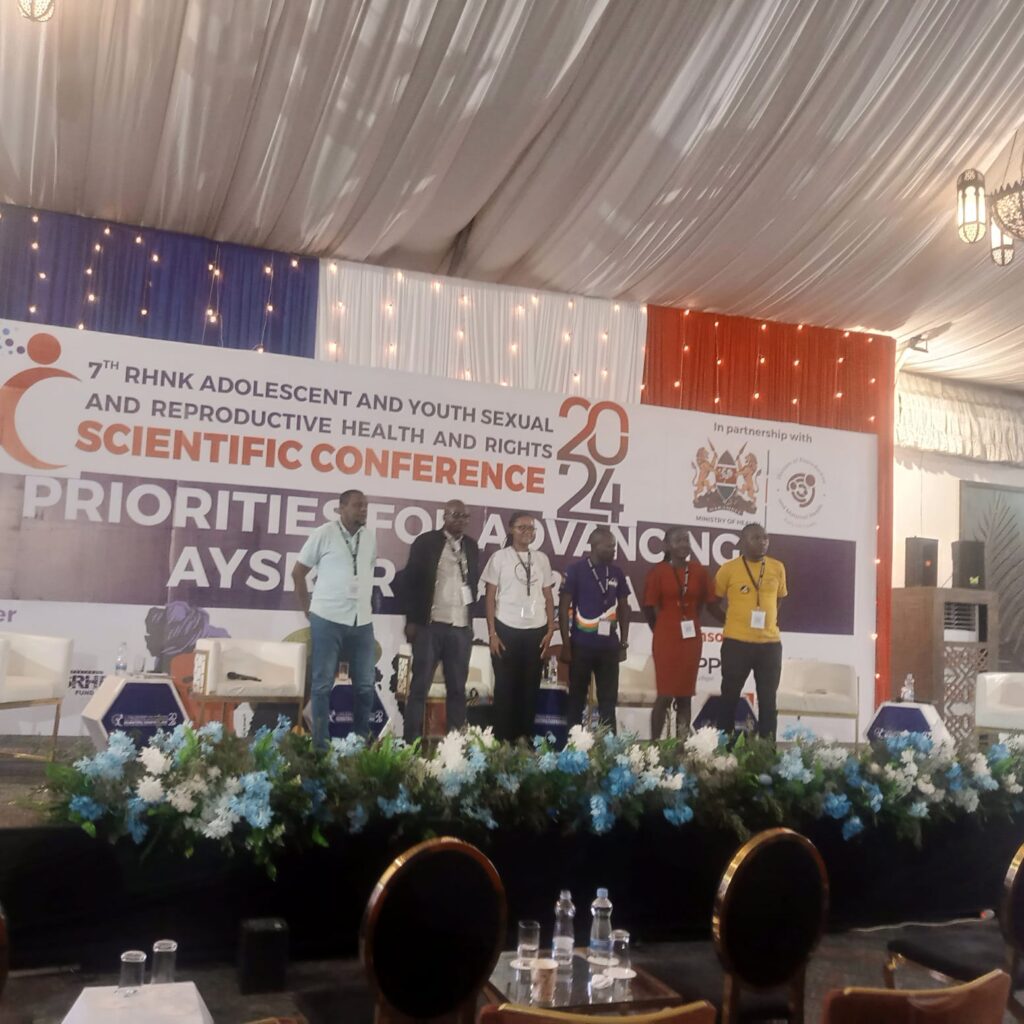School-Based Dialogue
Addressing HIV-related stigma among adolescents and young people requires innovative approaches that resonate with their experiences and interests. School-based dialogue sessions have emerged as a transformative strategy to combat stigma, providing a platform for open discussions and fostering a supportive community. By leveraging sports for mobilization, tailoring sessions to specific age groups, empowering teachers, adopting a partnership approach, and ensuring effective communication, these sessions are changing the narrative around HIV and making a significant impact.
During the 7th RHNK Scientific conference, Sheilla Mmbogah shared one of the best practices from our Dialogue Mtaani program which focuses on using sports to change HIV related stigma among adolescents and young people.
Here are some key Findings and lessons learnt from the school sessions;
- Using sports as a tool to gather and engage young people is an innovative and effective approach. Sports not only attract participation but also create a relaxed and enjoyable environment where adolescents feel comfortable engaging in dialogue. This approach breaks down barriers, fosters camaraderie, and encourages open discussions about sensitive topics like HIV.
- Tailoring sessions to specific age groups helps in addressing the unique needs and concerns of each group. Adolescents of different ages have varying levels of understanding and different experiences related to HIV. By grouping them appropriately, facilitators can deliver age-specific information and interventions that are more relevant and effective. This ensures that each participant receives the support and knowledge they need.
- Teachers play a crucial role in shaping the perspectives and attitudes of young people. Training educators to engage adolescents meaningfully in discussions about HIV is essential. Empowered teachers can facilitate better conversations, provide accurate information, and create a safe space for students to express their thoughts and fears. This empowerment also builds a supportive school environment that actively combats stigma.
- Involving adolescents as partners in these sessions is key to their success. When young people are treated as active participants rather than passive recipients, they are more likely to engage and take ownership of the initiatives. This partnership approach ensures that their voices are heard and valued, promoting a sense of belonging and responsibility. It also helps in designing sessions that are more aligned with their interests and concerns.
- The way information is shared plays a critical role in its impact. Communicating in a manner that resonates with young people increases the likelihood of them understanding, internalizing, and acting on the information. Using relatable language, interactive methods, and culturally relevant examples makes the sessions more engaging and impactful. When adolescents understand the message clearly, they are better equipped to make informed decisions and challenge existing stigmas.
- The abstract highlighted the importance of creating inclusive, engaging, and age-appropriate platforms for discussing HIV-related issues. School-based dialogue sessions, supported by strategic approaches like leveraging sports, empowering educators, and involving young people as partners, are proving to be effective in combating stigma. These sessions not only provide critical information but also create a supportive community where young people can share their experiences and learn from each other.
- Sports as a mobilization tool exemplifies how non-traditional methods can be used to address serious issues. By integrating sports, the sessions attract a wide range of participants who might not otherwise engage in discussions about HIV. The sports activities serve as icebreakers, making it easier for participants to open up and engage in meaningful conversations.
- Age grouping ensures that the interventions are not one-size-fits-all but are tailored to the specific developmental stages and needs of different age groups. This targeted approach makes the sessions more relevant and impactful, ensuring that each adolescent receives the appropriate level of information and support.
- Empowering teachers and involving young people as partners helps in building a network of support within the school environment. Educators, students, and even parents can work together to create a stigma-free zone where open dialogue about HIV is encouraged and supported. This collaborative effort fosters a sense of community and shared responsibility.
- Effective communication is crucial for ensuring that the change initiated by these sessions is lasting. By making the information accessible and engaging, young people are more likely to retain what they learn and apply it in their daily lives. This not only helps in reducing stigma but also promotes healthier behaviors and attitudes towards HIV.
 In conclusion, School-based dialogue sessions are a powerful tool in changing the narrative around HIV-related stigma among adolescents and young people. By incorporating sports, tailoring sessions to specific age groups, empowering teachers, adopting a partnership approach, and ensuring effective communication, these sessions create an inclusive and supportive environment for discussing HIV. This innovative approach not only combats stigma but also promotes a more informed and supportive community, empowering young people to make informed decisions about their health and wellbeing.
In conclusion, School-based dialogue sessions are a powerful tool in changing the narrative around HIV-related stigma among adolescents and young people. By incorporating sports, tailoring sessions to specific age groups, empowering teachers, adopting a partnership approach, and ensuring effective communication, these sessions create an inclusive and supportive environment for discussing HIV. This innovative approach not only combats stigma but also promotes a more informed and supportive community, empowering young people to make informed decisions about their health and wellbeing.
